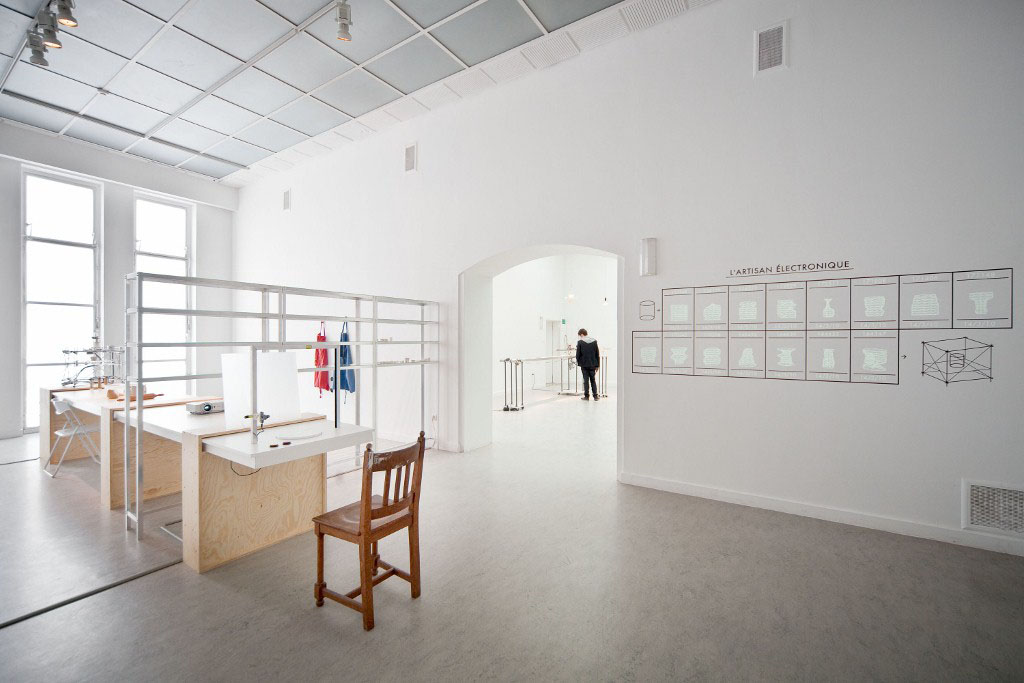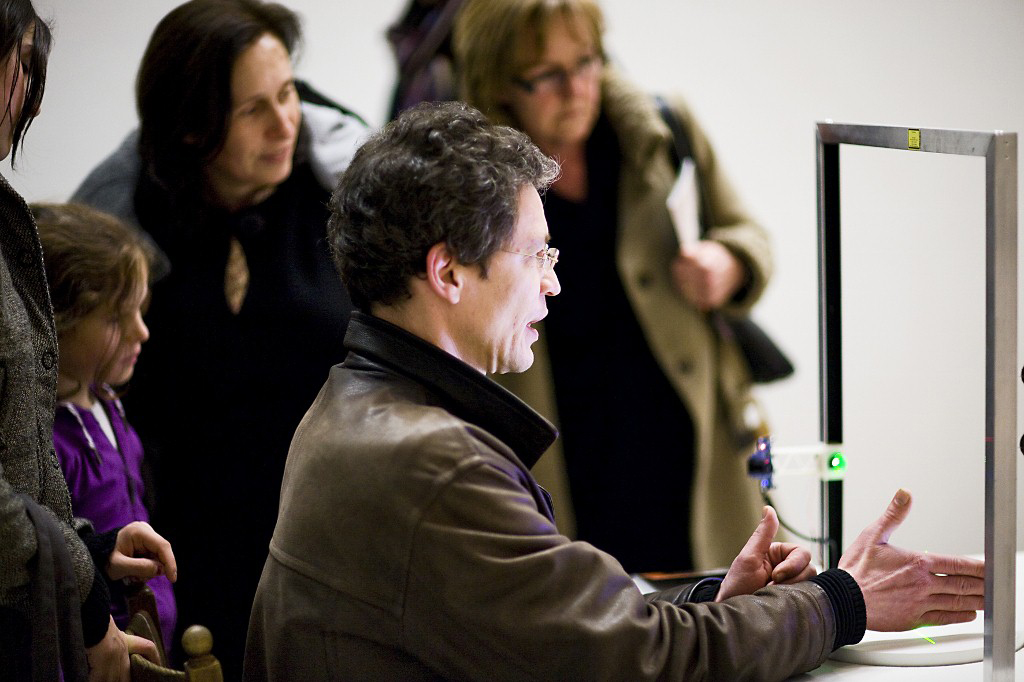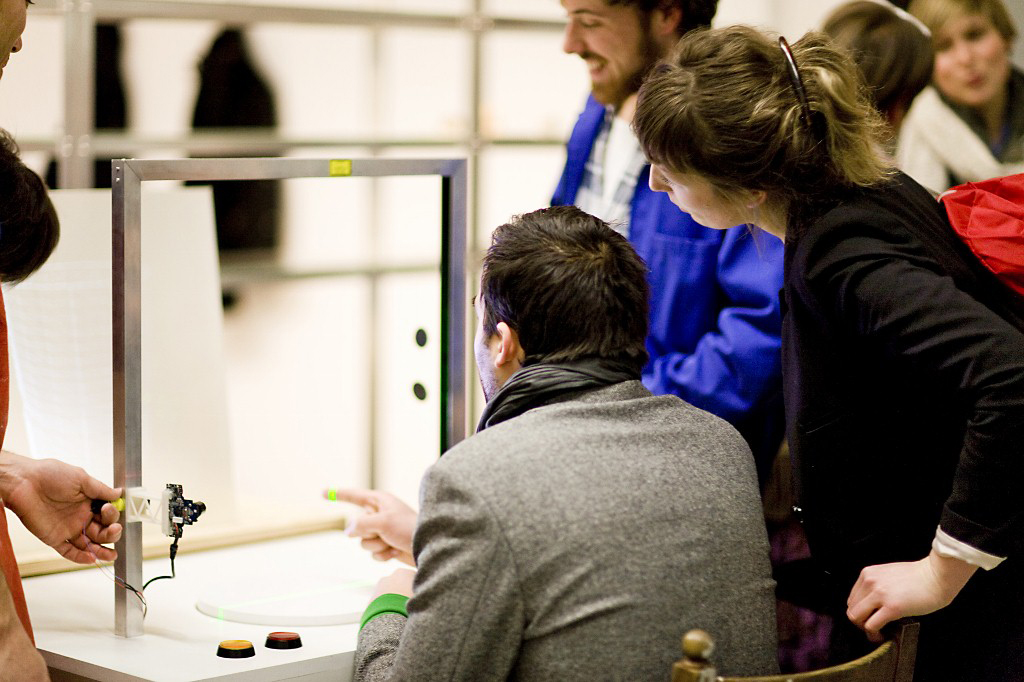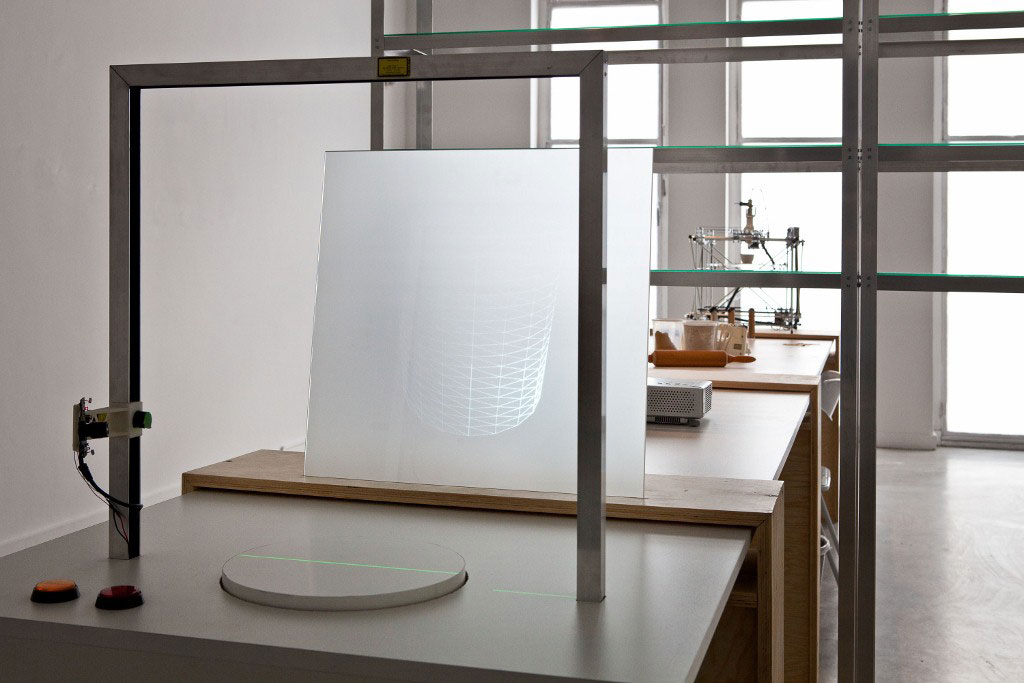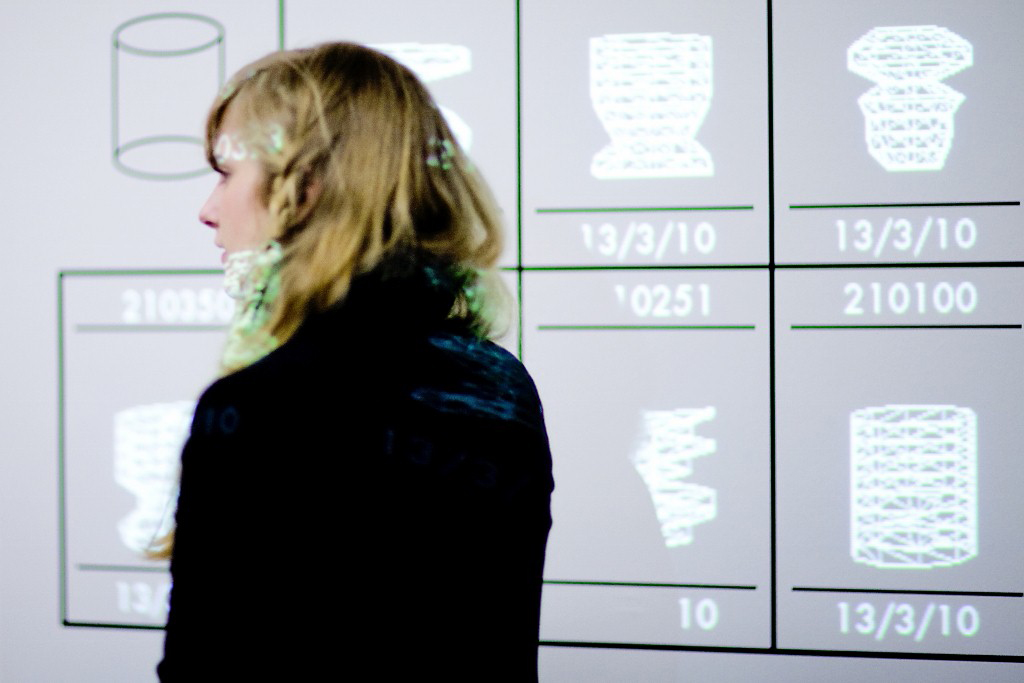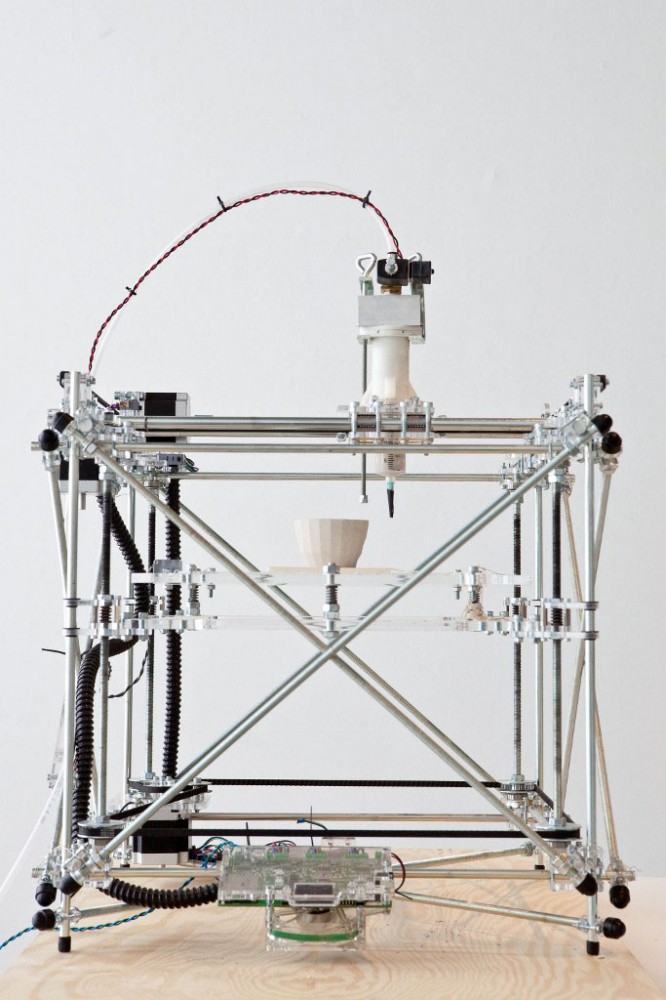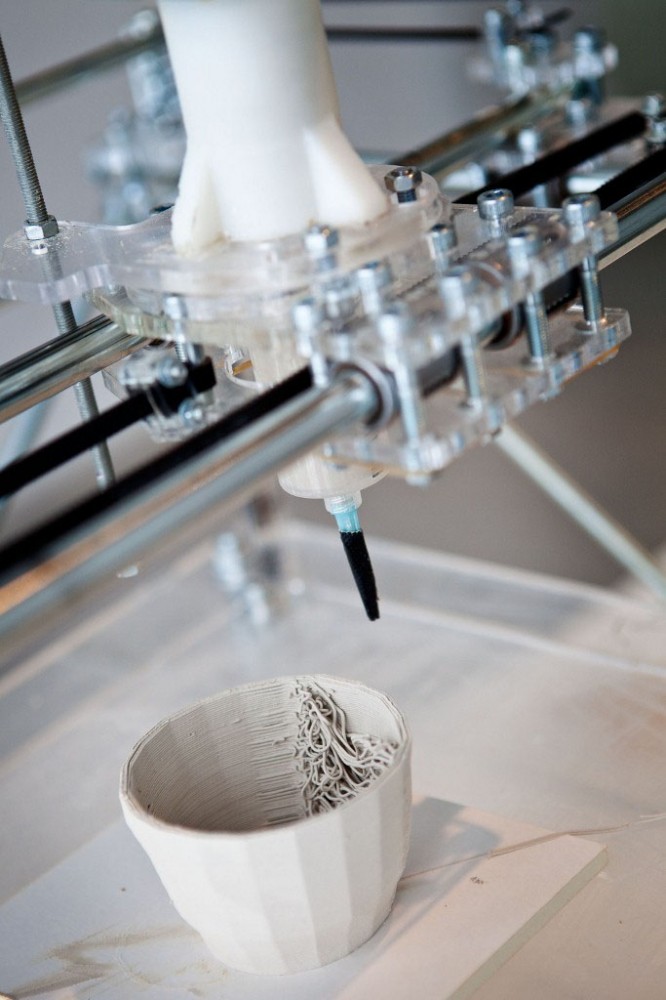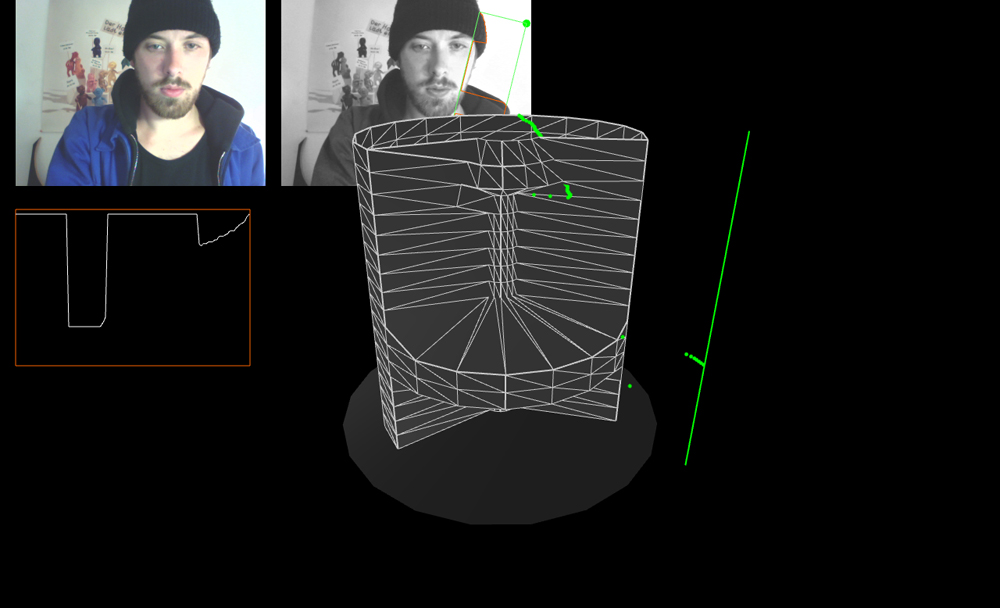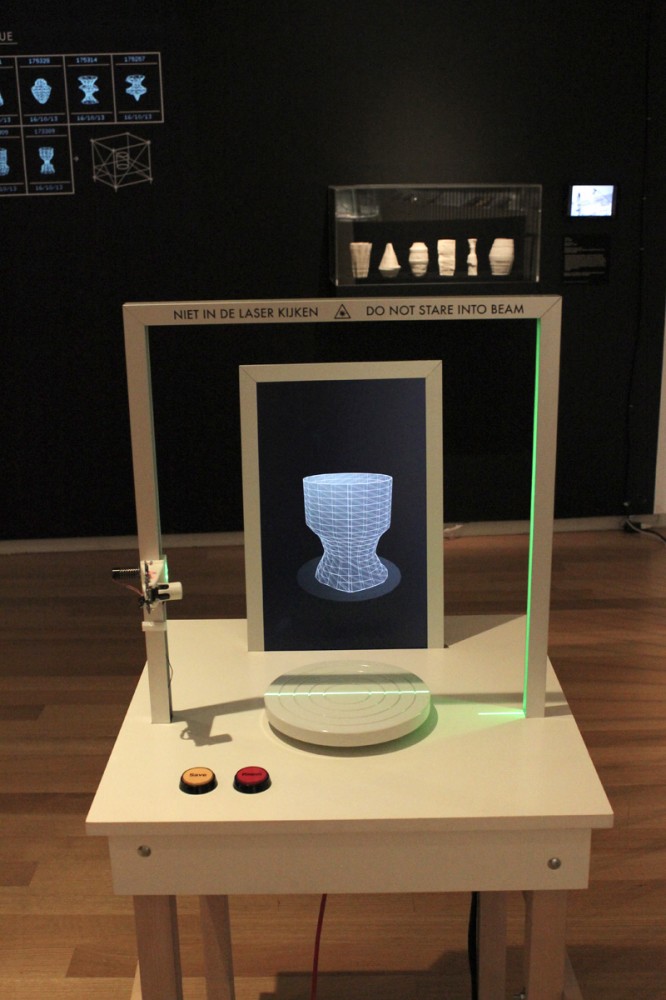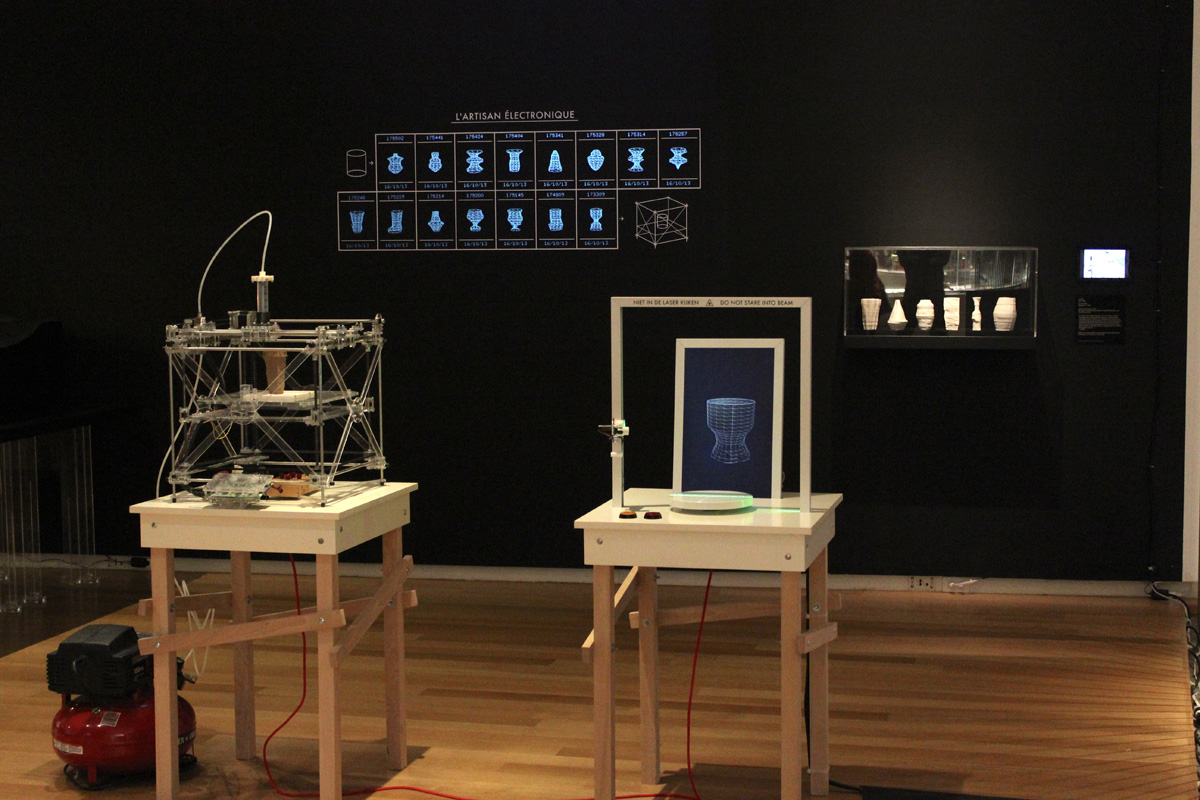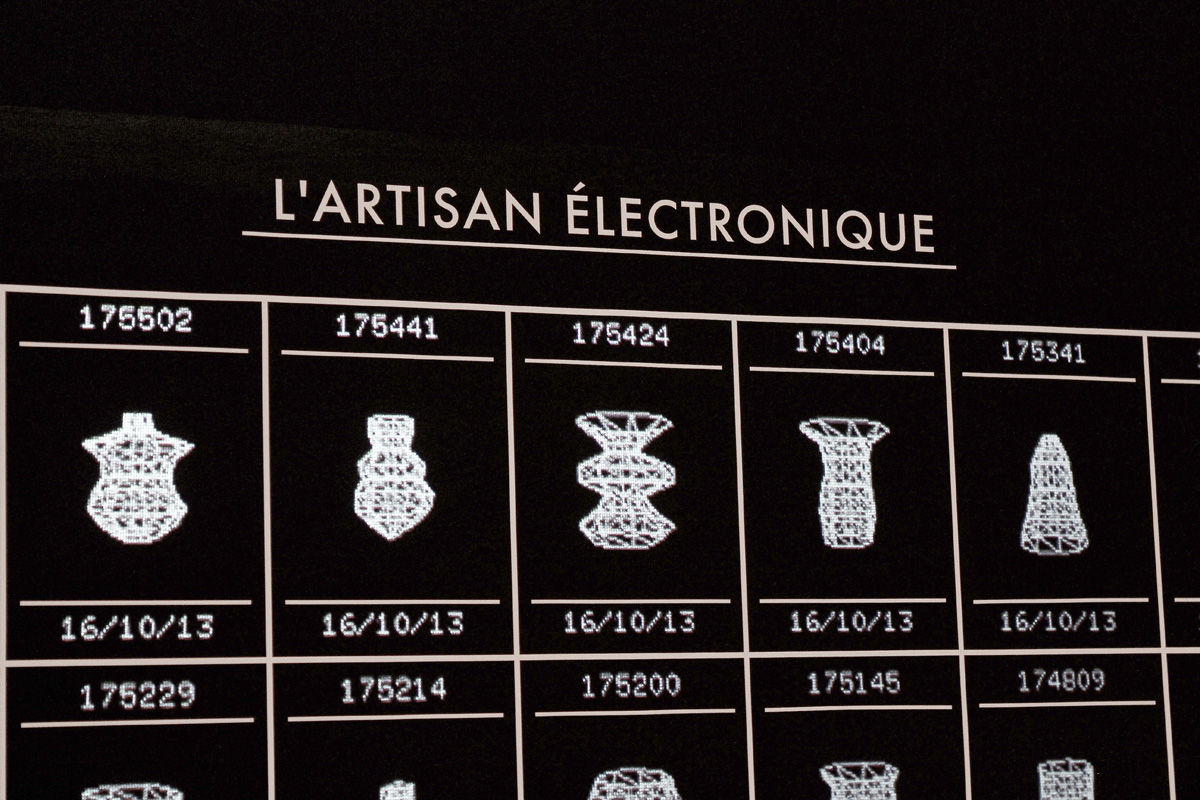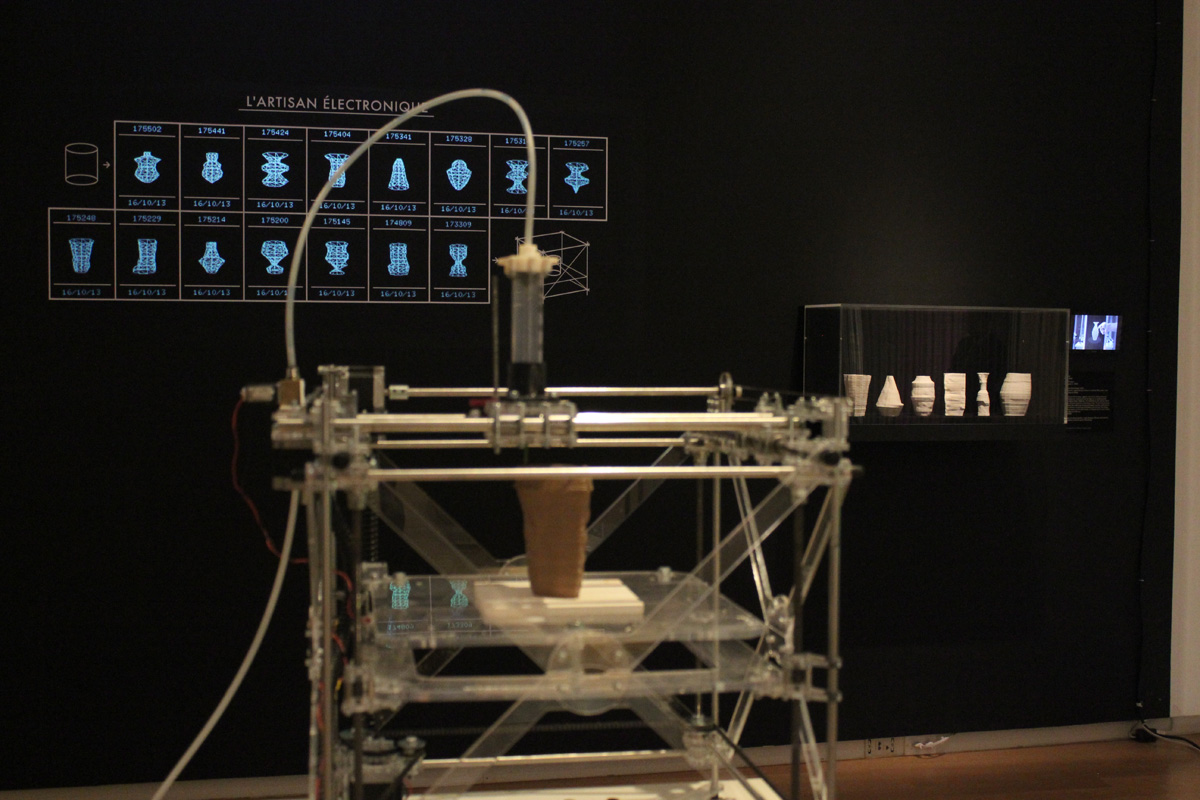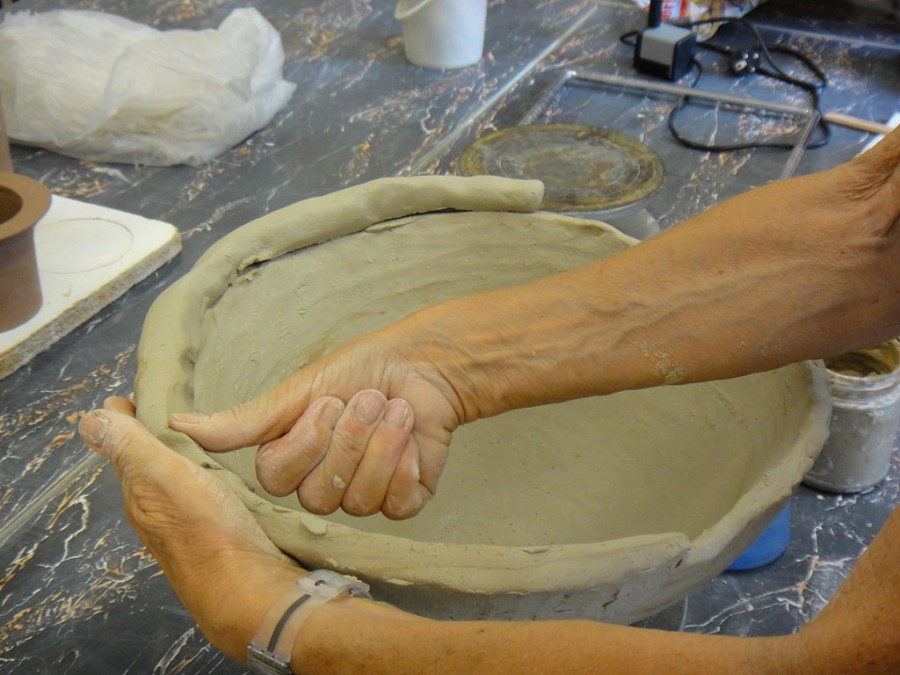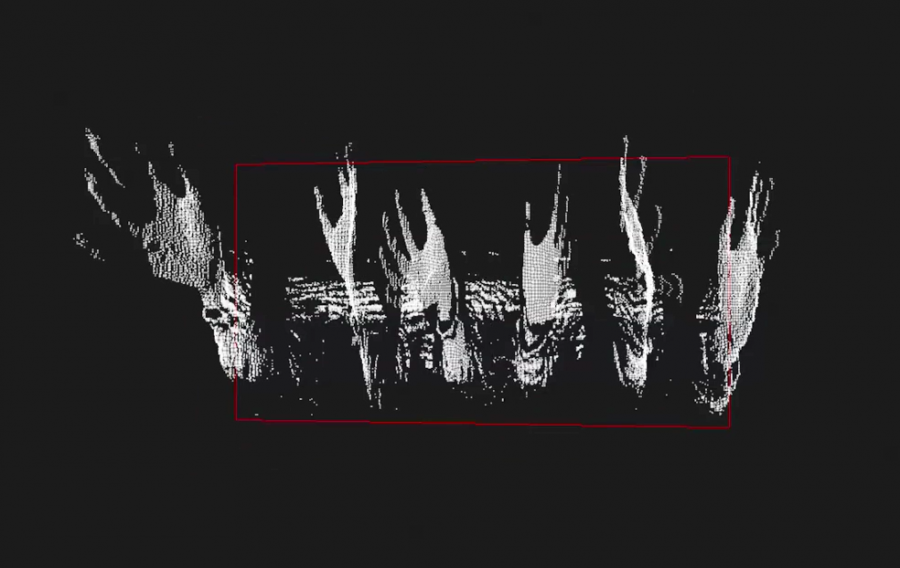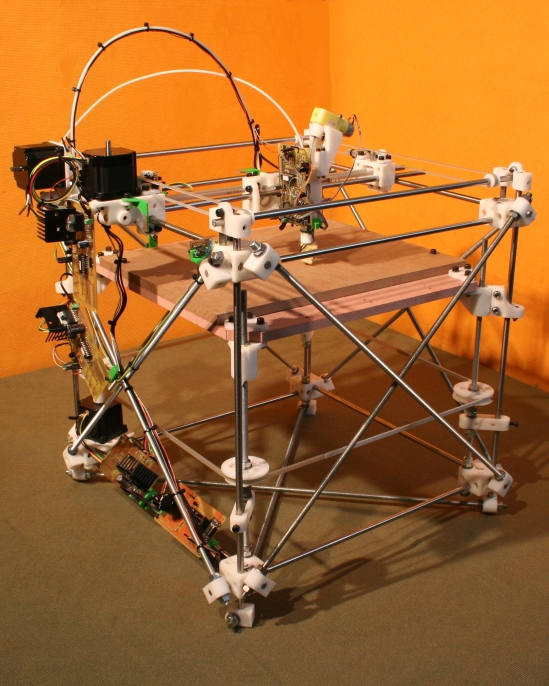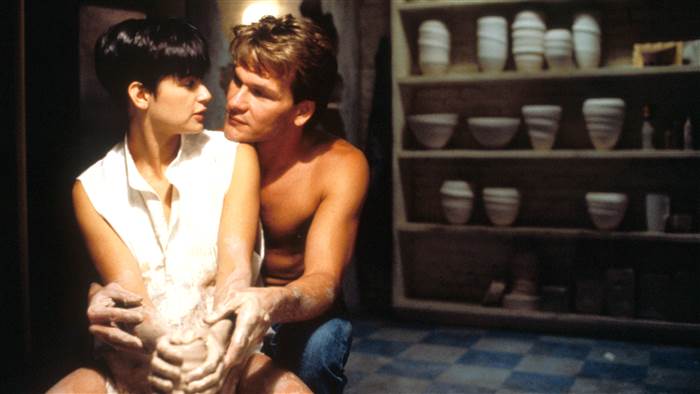L'Artisan Electronique is a digital pottery studio consisting of a virtual pottery wheel and a ceramic 3D printer.
Visitors can "turn" their own digital forms with the virtual pottery wheel, a special kind of 3D manipulation tool we built with lasers, optics and custom made software. Every object created with this device is saved in an ever growing database and briefly displayed in a projected digital cabinet. At regular intervals during the exhibition, the created digital forms are printed with the ceramics printer and put on display as part of the installation.
